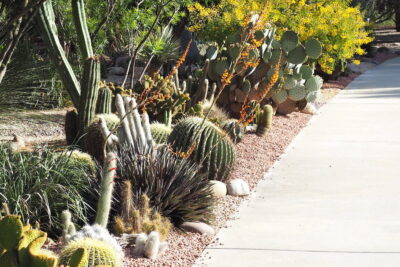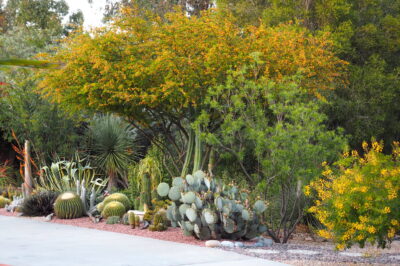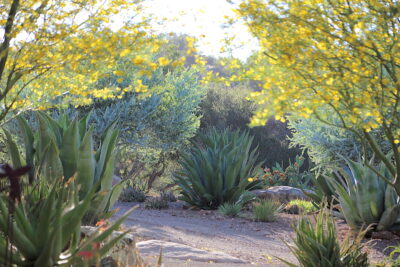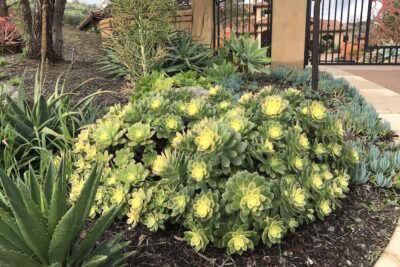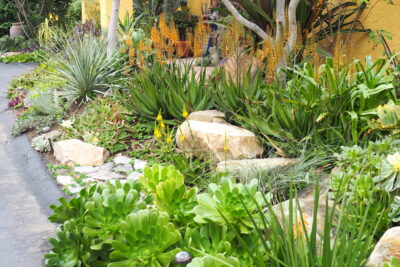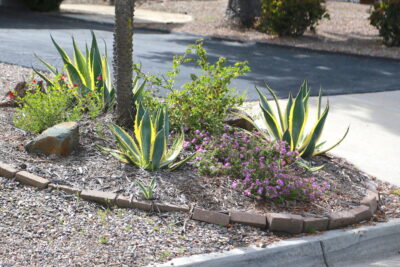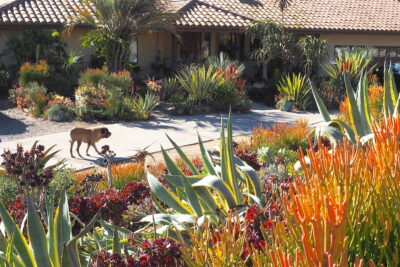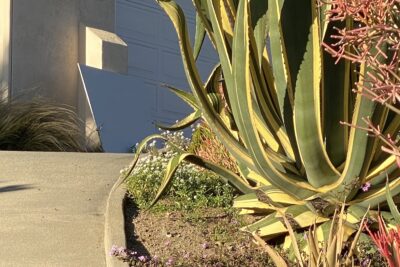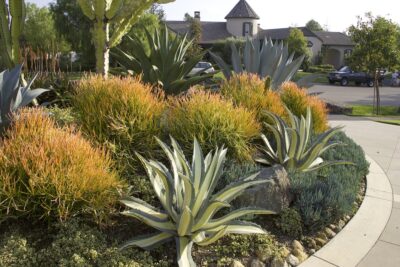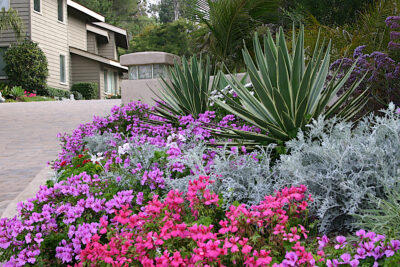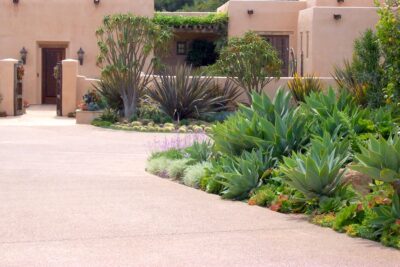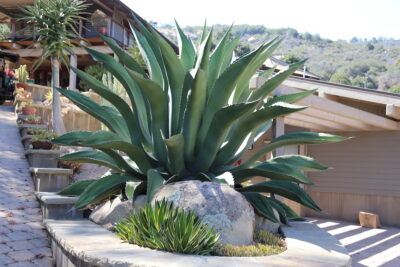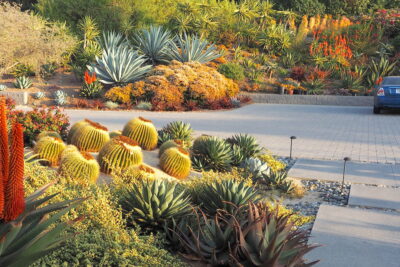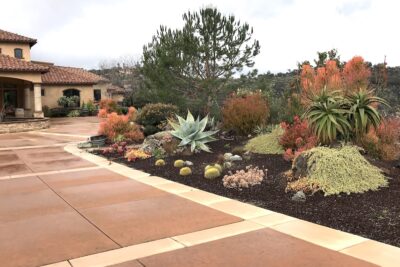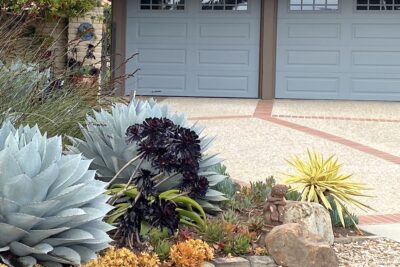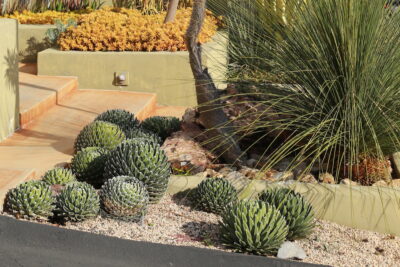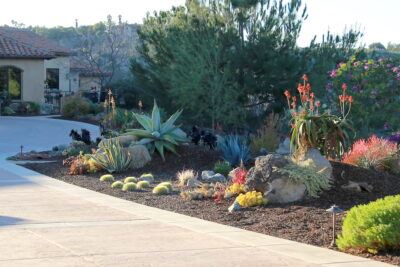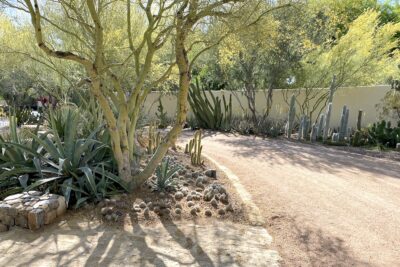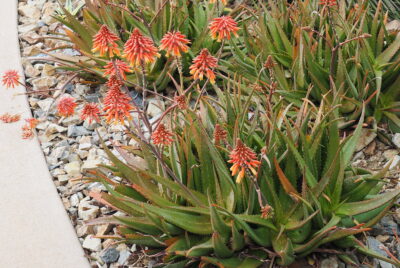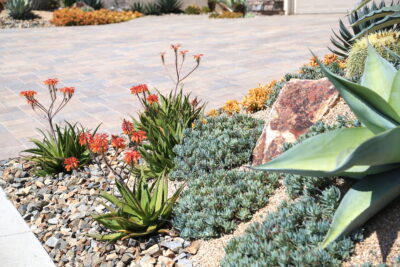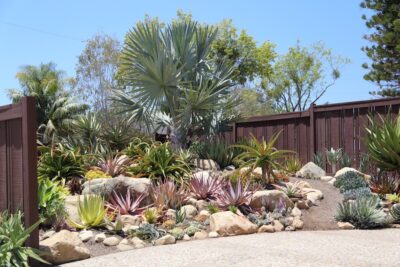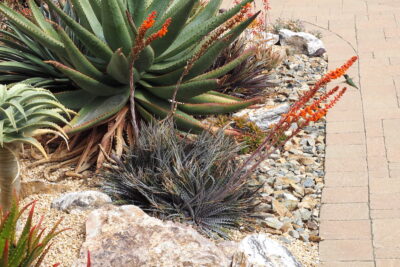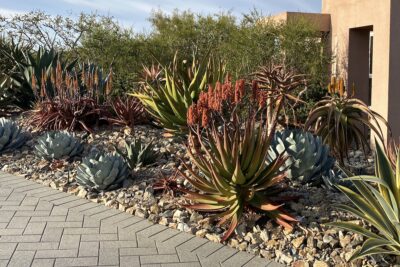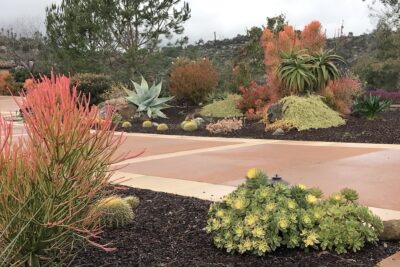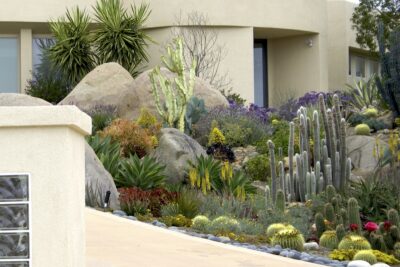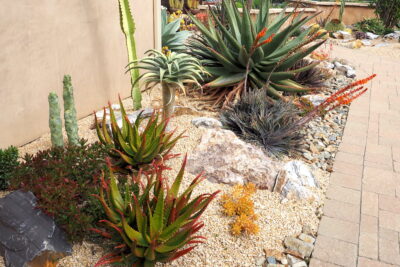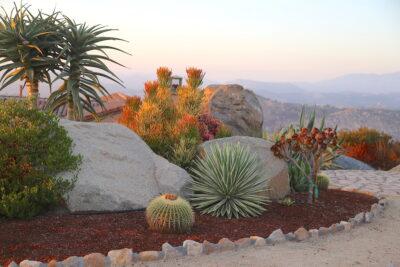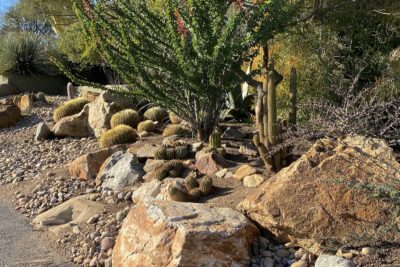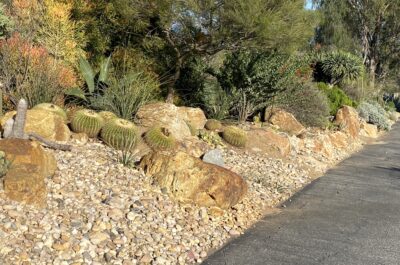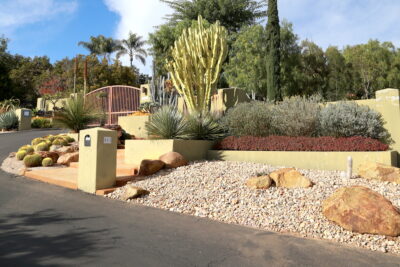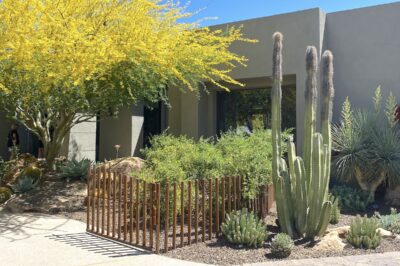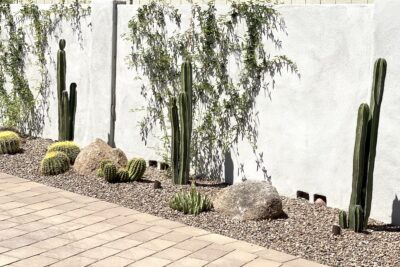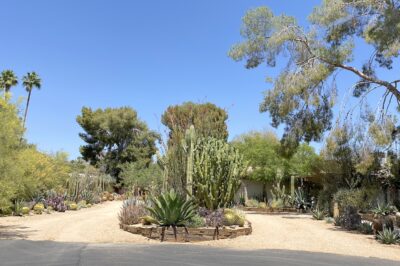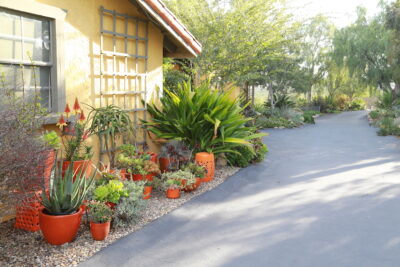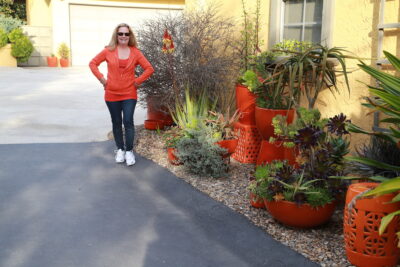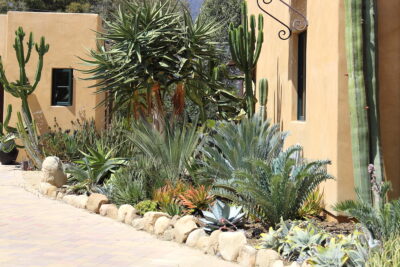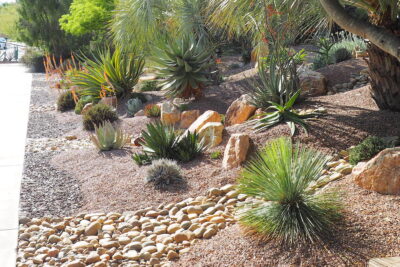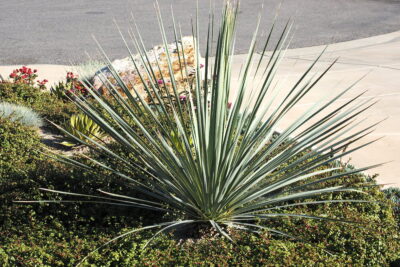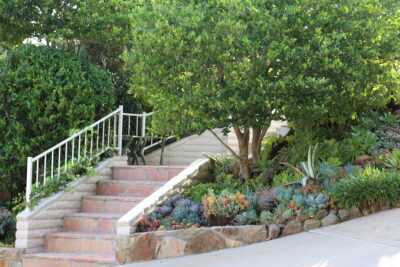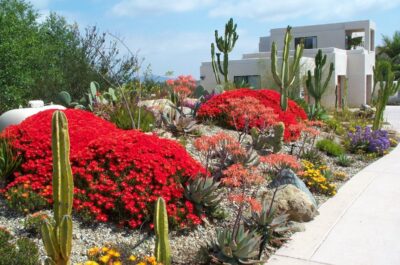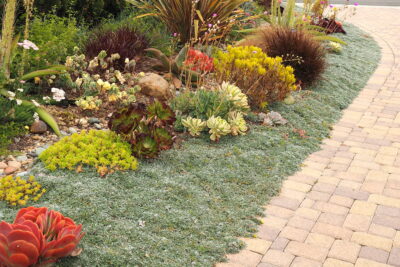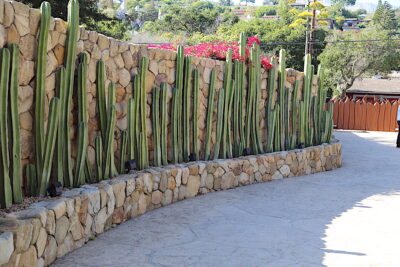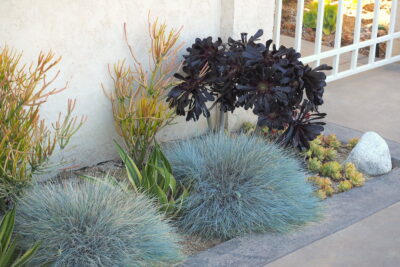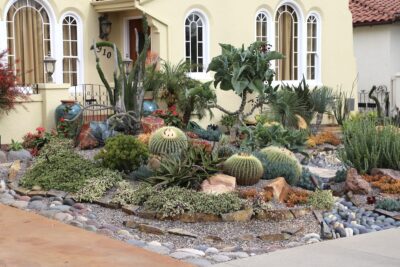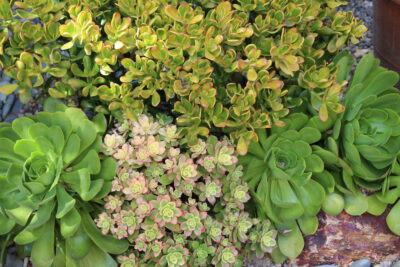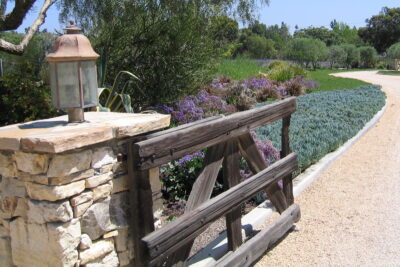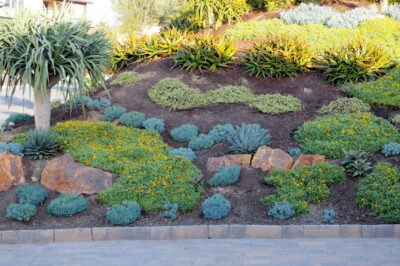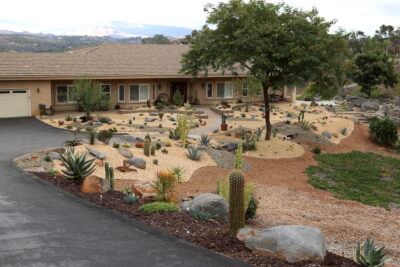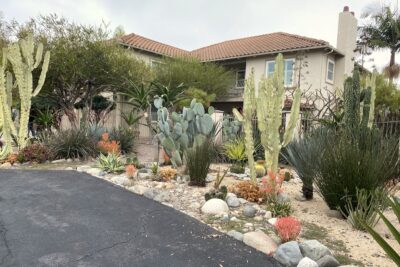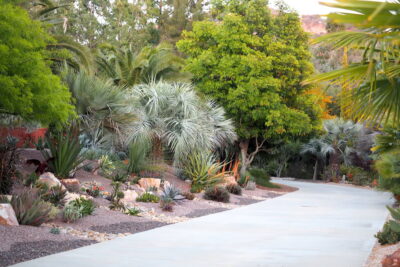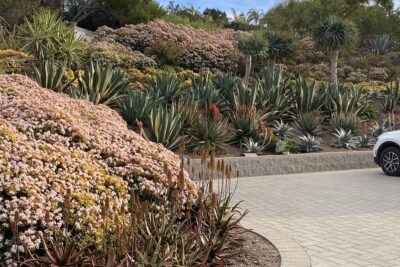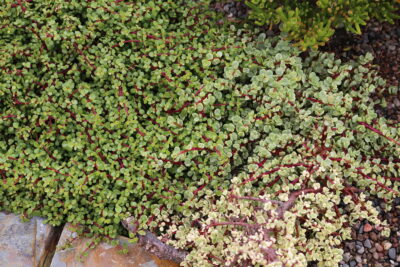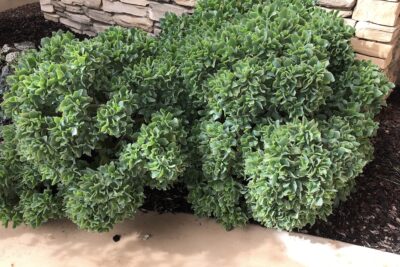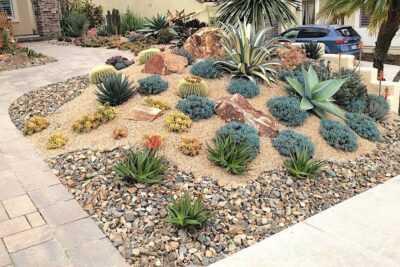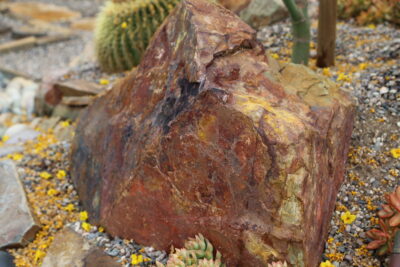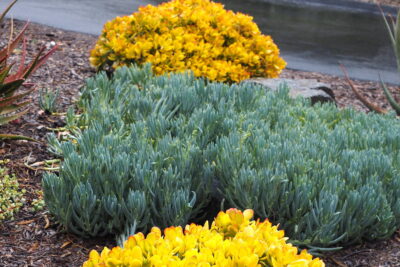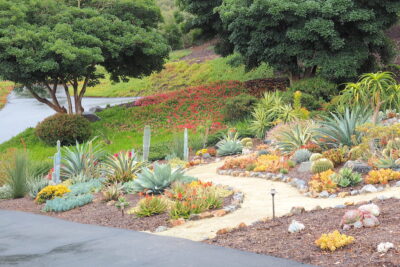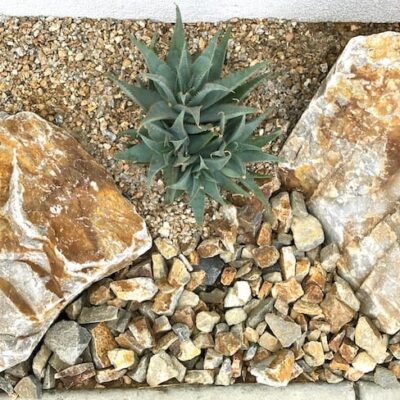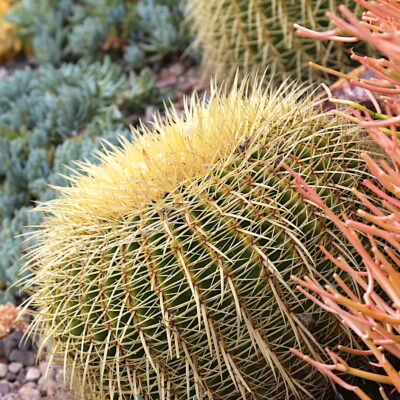What borders your driveway will delight or dismay you daily, and also make an impression on guests, passersby, neighbors, and eventual homebuyers. Curb appeal matters, and this this important landscape area shouldn't be neglected.
The succulent driveway essentials I've compiled here illustrate low-water, easy-maintenance options for driveway plantings throughout the Southwest. Loaded with ideas, you'll find these tips, must-know's, and 75-photo Gallery certain to inspire you.
Keep in mind
Know how large plants get and plan accordingly. If possible, leave several feet alongside the driveway unplanted (topdress with crushed rock). This helps when wheels drift past pavement, and allows room for unexpectedly vigorous plant growth.
- All plants---including succulents---grow and lean in the direction of greatest sun.
- Delivery trucks may cut corners, potentially wiping out prized specimens. You don't want a monstrose euphorbia you've cultivated for years to get squashed.
- Same for irrigation: Don't place risers where they'll get run over. If you can't move a riser, pile rocks around it.
- Succulents near a mailbox or utility box may eventually engulf it. Trimming them---whether you do it or the utility company does---may become necessary and, unless you plan ahead, can be prominent and awful.
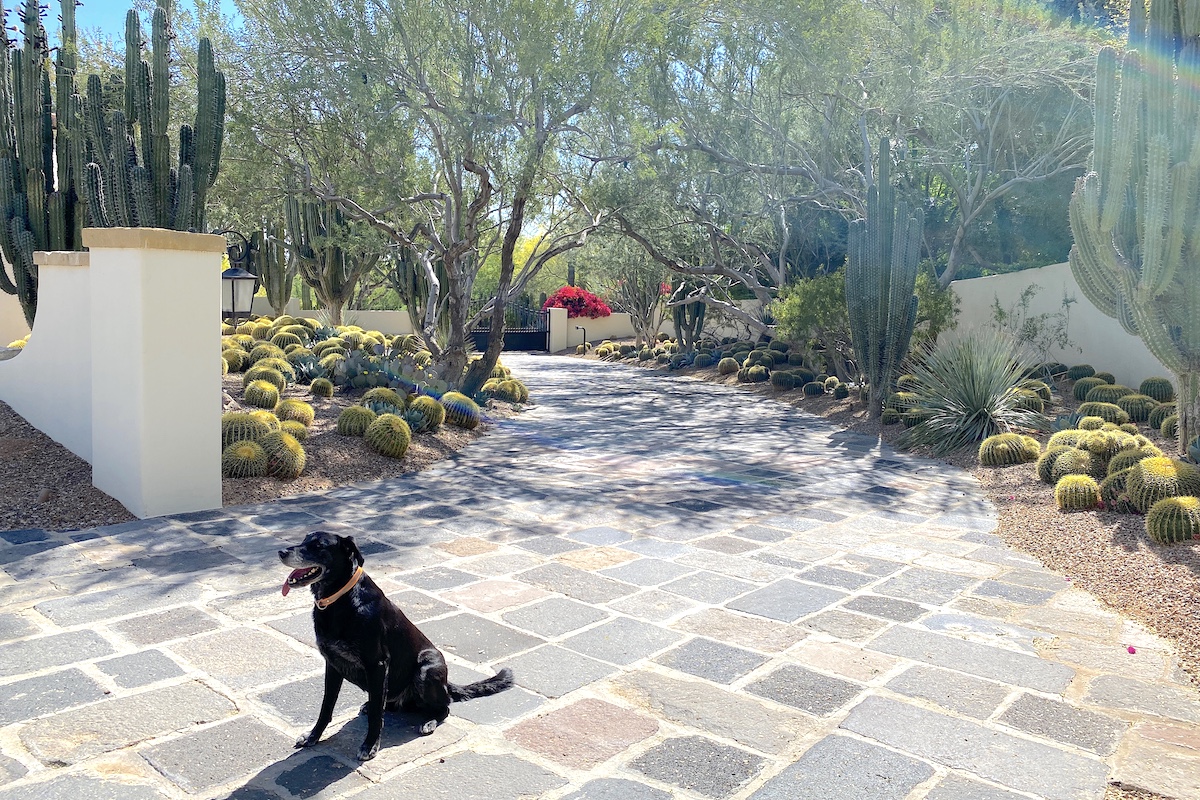
Palo verde trees enhance the driveway of an Arizona estate and provide dappled shade for understory plants.
- Got a long driveway? Border it with trees that arch over it and cast pleasant shadows in early morning and late afternoon. See more examples in the gallery below.
What Not to Plant
Large agaves
These look great when small, but end up huge and may need to be whacked back or removed. Unless you have room to plant a behemoth 6 to 12 feet from the pavement, it eventually will become a pain...in more ways than one.
- That said, when a large agave finally blooms and dies---at age 15 to 20---a driveway garden is an easy place from which to remove it. Far better than, say, your back yard. Learn more on agave removal.
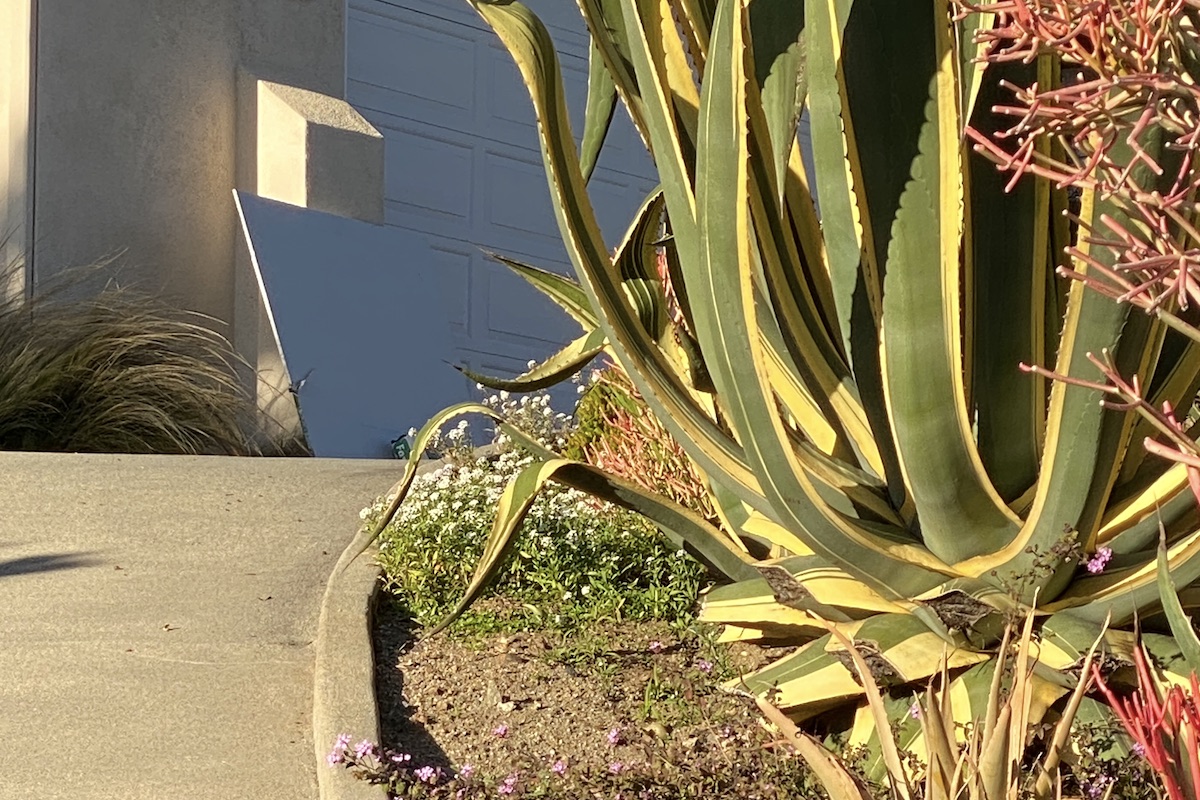
Agave americana 'Marginata', poorly trimmed. Chopping leaves of a large agave half-way ruins its symmetry. If you must, go all the way to the stem.
The "pretty little ones"
It's tempting to create swaths small rosette succulents: echeverias, sedums, graptopetalums and hybrids. However, they're high-maintenance in the long run.
- Rosette succulents grow from the top center and old leaves dry and fall off, so after a year or two, they're mainly eel-like stems. You'll need to snap off the rosettes, discard the rest of the plant (stems and roots), refresh the soil, and replant the tips as cuttings.
- Maintaining rosette succulents is only a joy if you're refreshing container gardens, flower beds, or window boxes. Moreover, such succulent jewels are best appreciated close-up and at your leisure, ideally in an outdoor sitting area.
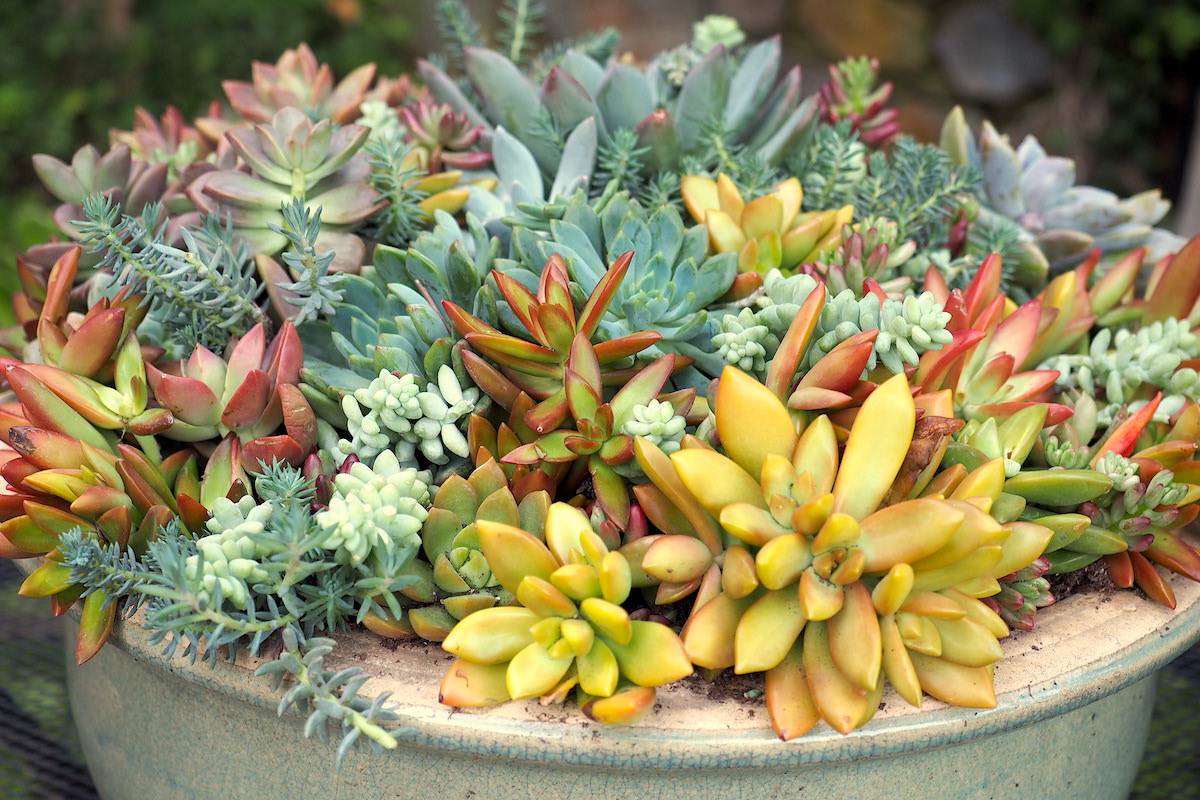
Rosette succulents: Lovely but impractical for driveways.
Cacti (with an exception)
- That said, designers and savvy homeowners border driveways with barrel cacti. Golden spheres make any area look stunningly simple. Position in multiples away from pavement. They'll look amazing.
- Learn more about golden barrel cactus.
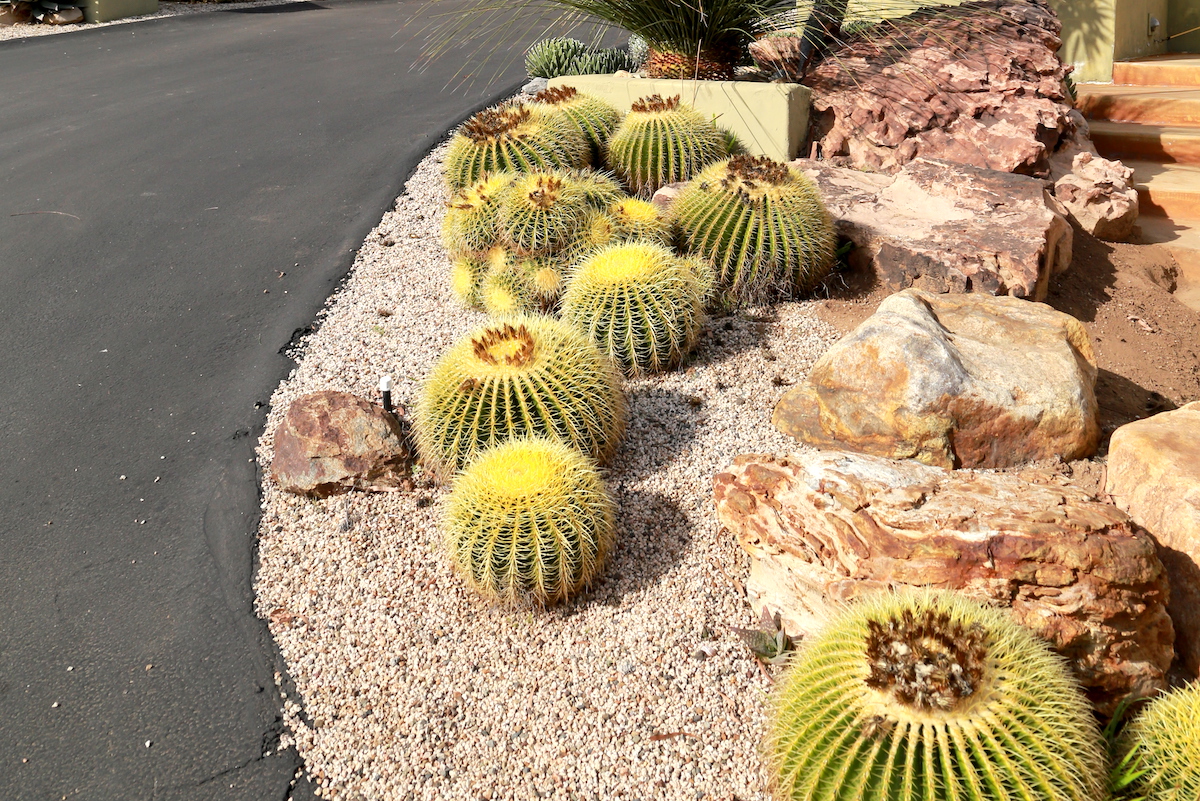
Boulders and barrels (Echinocactus grusonii)
Smart options
Ice plants. There exist numerous colorful ice plants. They flower mainly in spring and are merely green mounds the rest of the year…with the exception of Lampranthus ‘Lemon’. It has shiny yellow flowers and blooms on-and-off all year.
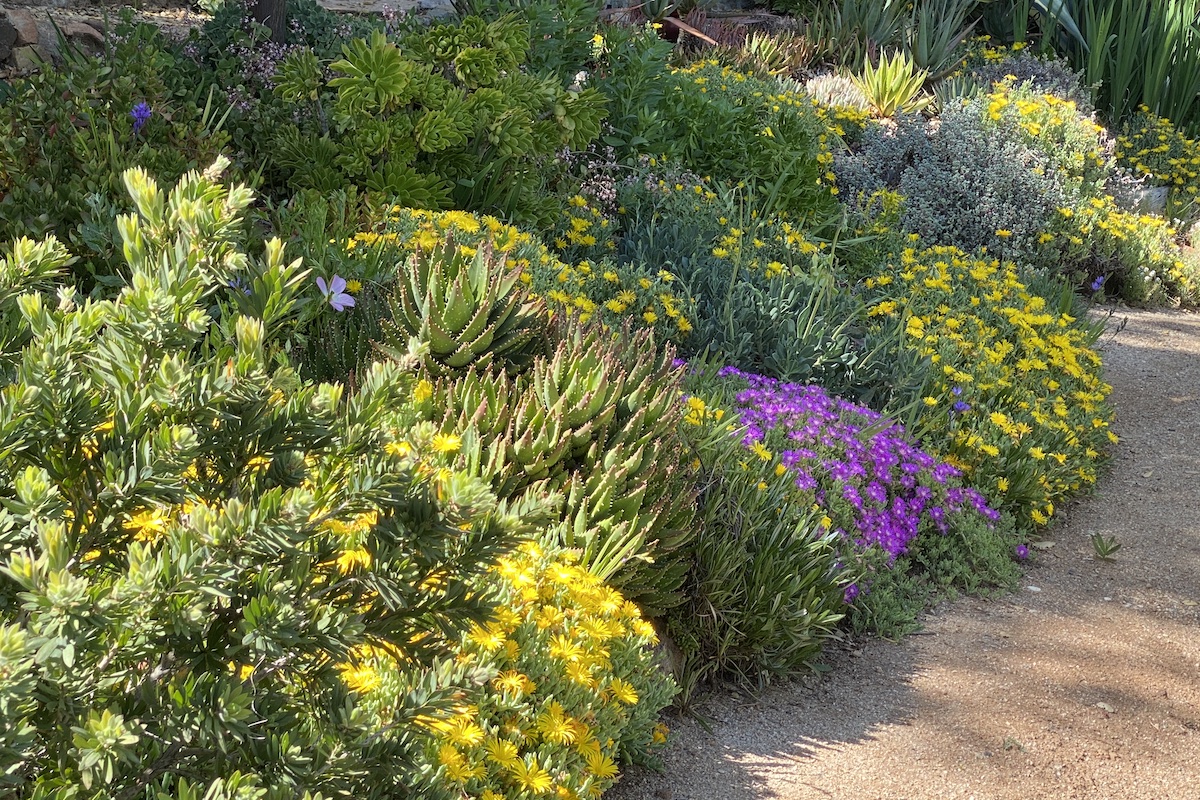
Lampranthus 'Lemon', Drosanthemum floribundum
- I can attest to the longevity of common Drosanthemum floribundum (rosea ice plant)---there are patches of it in my garden that date to my home's previous owners. (I've been here 33 years.) I love how its neon-purple flowers announce spring. See more iceplant options.
Jade plants are terrific driveway shrubs where temps don't drop below 32 degrees. Even if frost is a concern, asphalt absorbs heat during the day and releases it at night. So you might be able to get by, especially if your driveway slopes (cold air flows downward).

Golden jade (top), large Canary Island aeoniums, variegated Aeonium 'Kiwi' (center)
- See many lovely jades in addition to the common green one on my Crassula page.
Aeoniums mix beautifully with other succulents and are minimal-care, but do get leggy over time except for a marvelous old species: Aeonium haworthii. It's gray-green, forms branching shrubs several feet tall, and is massed with palm-sized and smaller star-shaped rosettes.
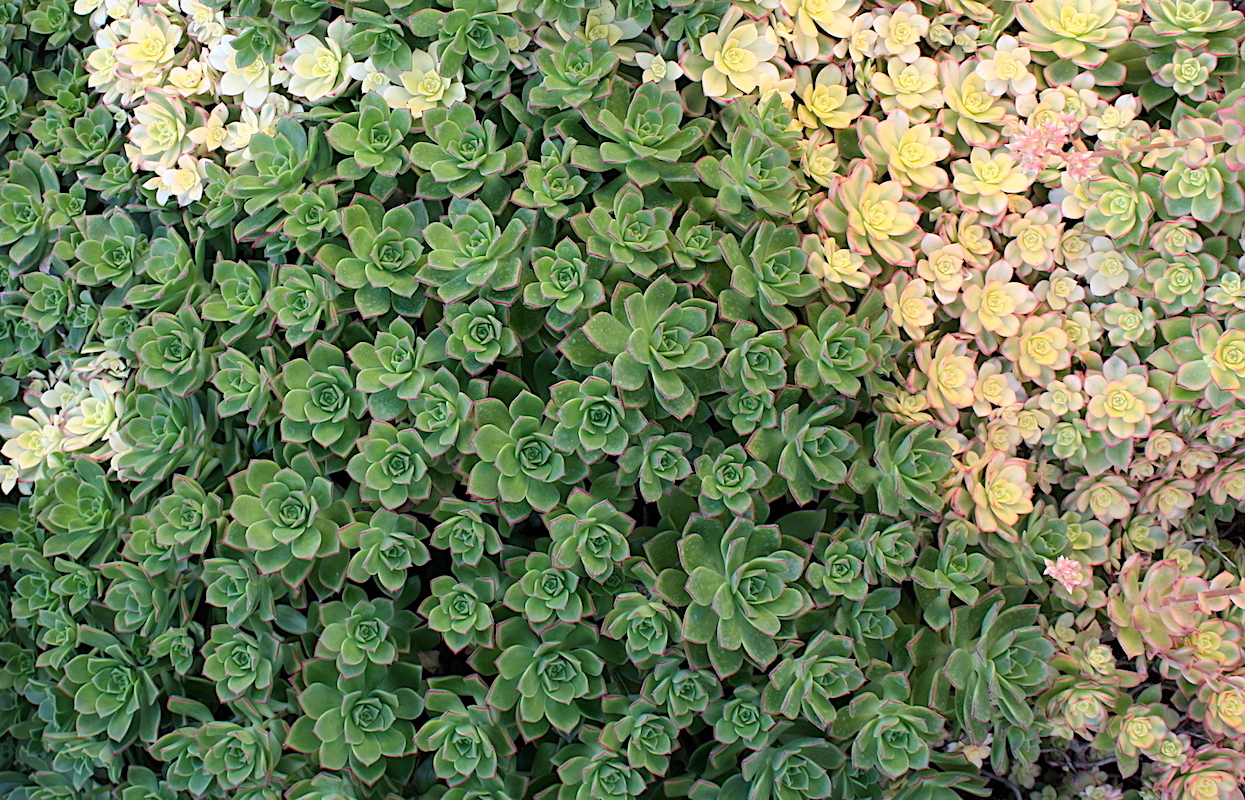
Aeonium haworthii, Aeonium 'Kiwi'
- You're probably familiar with its popular variegate, Aeonium 'Kiwi'. Just know that variegates in general are best for coastal areas and won't thrive in all-day sun inland.
Low-water perennials blend beautifully with succulents. Options include ivy geraniums, statice, lantana, prostrate rosemary, acacias (from trees to shrubs), Nile lilies (Agapanthus sp.), dymondia, African daisies and ornamental grasses. All need more water, but not so much that succulents can't handle it.
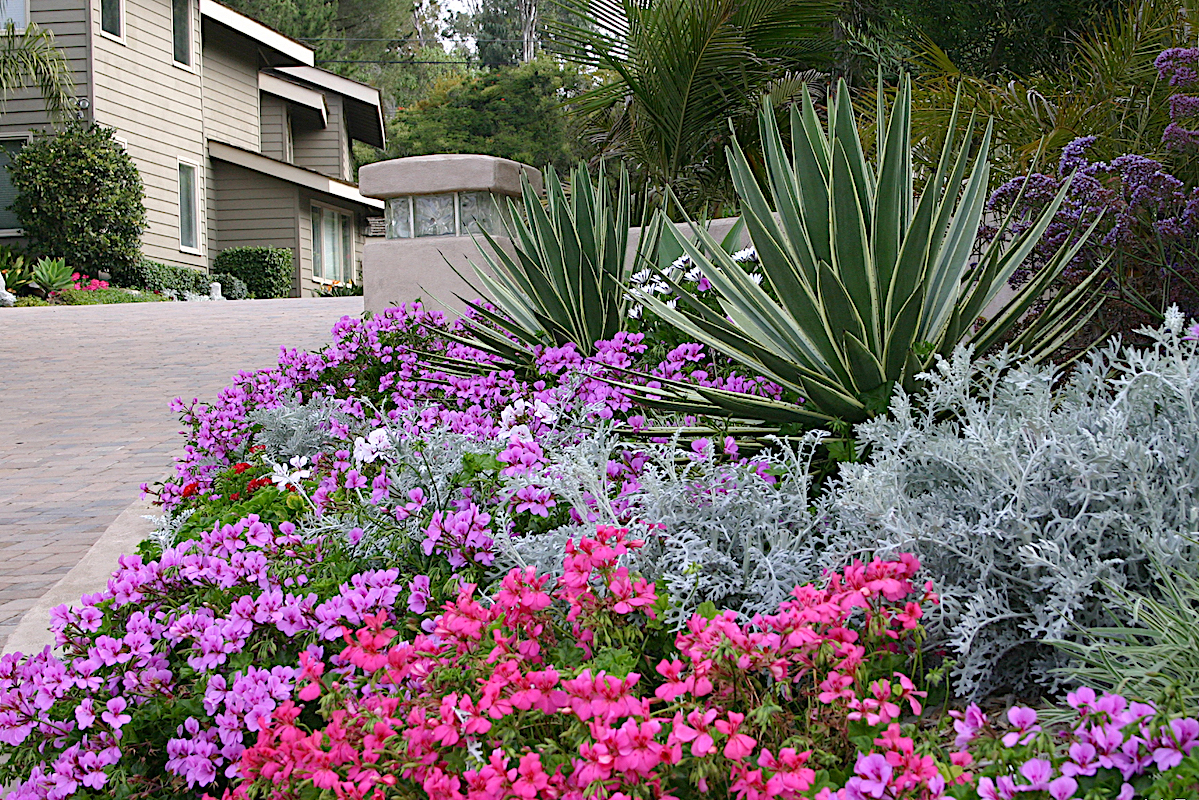
Agave angustifolia, colorful ivy geraniums, purple statice (upper right), silver-gray dusty miller
Senecio mandraliscae (blue chalk fingers) is a popular, low-growing, sky-blue trailing succulent. Every other year it needs cutting back, or it’ll get leggy. But unlike rosette succulents, good ol' Senecio mandraliscae branches where it's cut, so plants stay compact. Use cuttings to fill gaps.
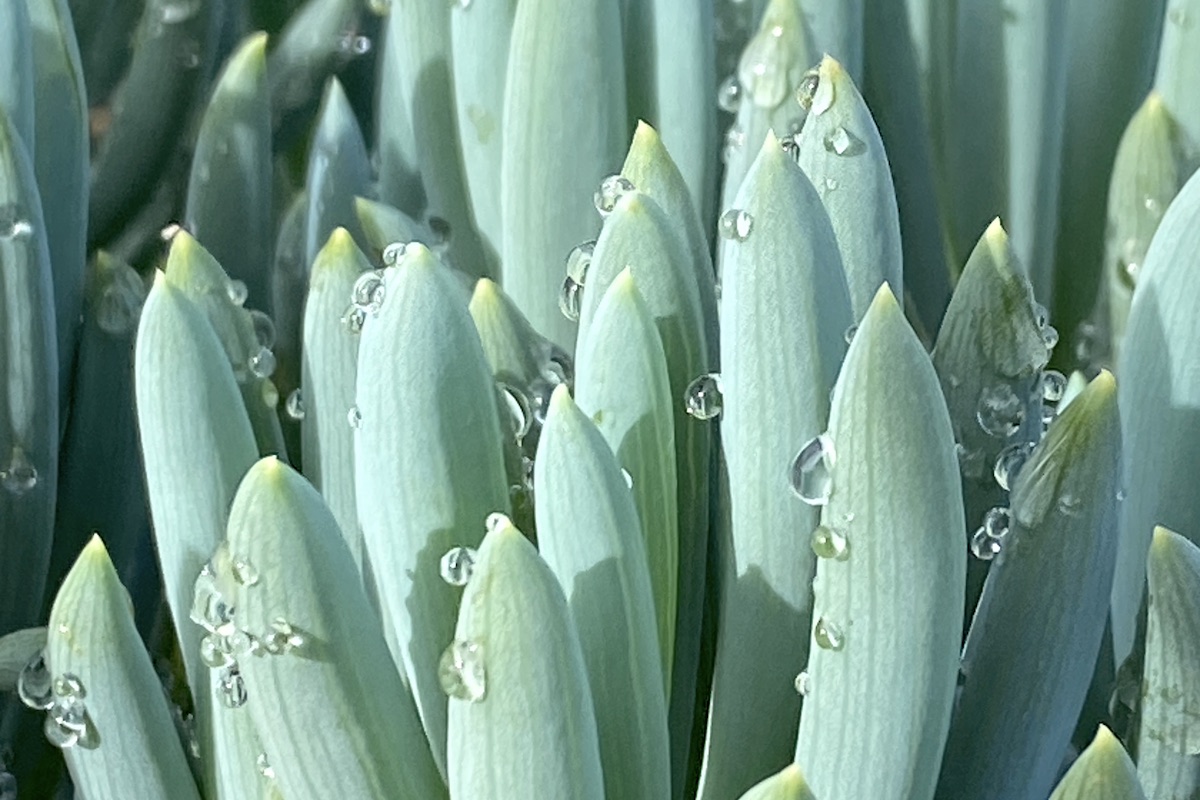
Senecio mandraliscae stems are finger-sized.
- Add the color complement of blue for a wow effect: mid-size aloes with orange spires; African daisies; or bronzy-yellow jade (Crassula ovata 'Hummel's Sunset'). Find examples in the Gallery below.
For desert and Southern CA gardens, mid-sized to large, easy-care succulents include dasylirions, elephant's food (Portulacaria afra), ponytail palms (Beaucarnea recurvata), yuccas, and hesperaloes. See them in my post: Tour a Desert Estate Garden.
But the best are...
Rocks! For a no-maintenance, no-water driveway border that looks great year-round, "plant" rocks of all sizes: small in front, large in back, scattered for a natural effect.
- Compared to the cost of a gardening crew over years to come, such once-yet-permanent installations are a bargain. See my post: Why You Really Need Rocks.
- Boulders create microclimates for succulents, hold moisture beneath them, shade young plants, and radiate warmth at night.
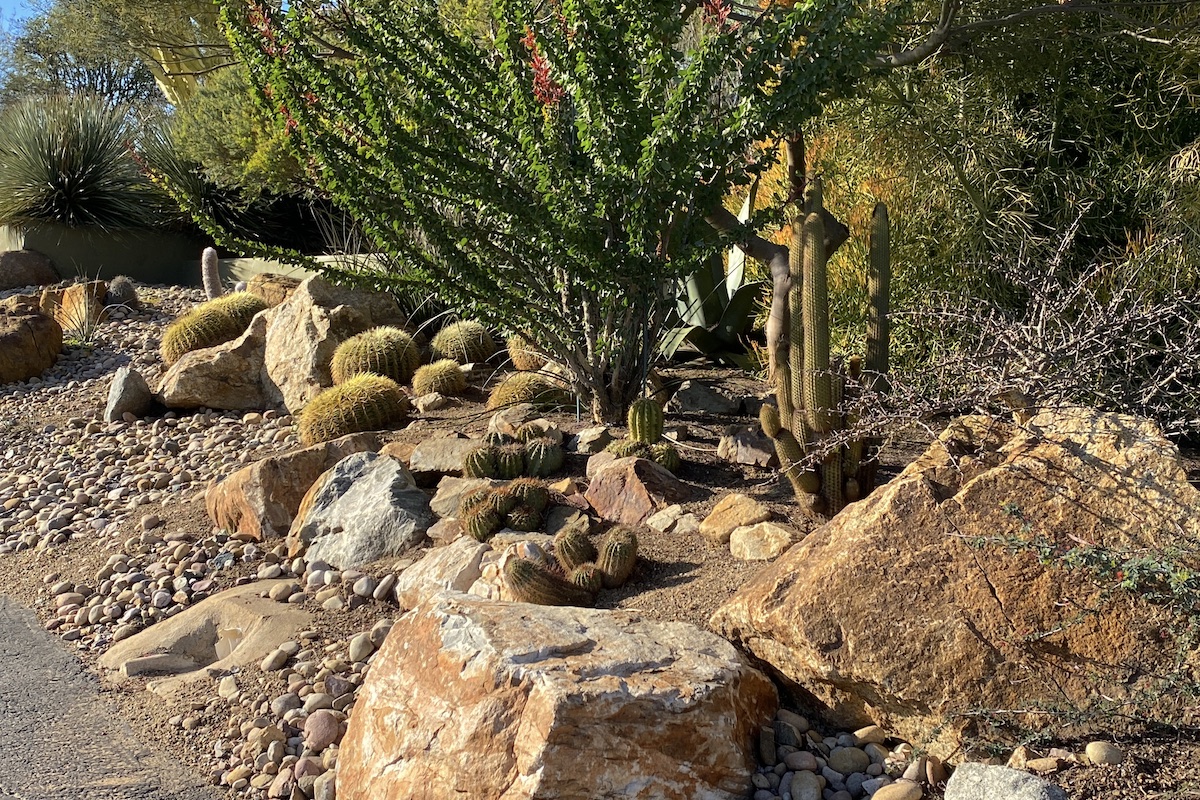
Boulders, cacti and ocotillo flank a driveway in Fallbrook, CA
- Combine decomposed granite, gravel, fist-sized "rubble rock," small boulders, and large boulders craned into place...which is not as bad as it sounds. It's likely that trucks and heavy equipment can easily access your driveway.
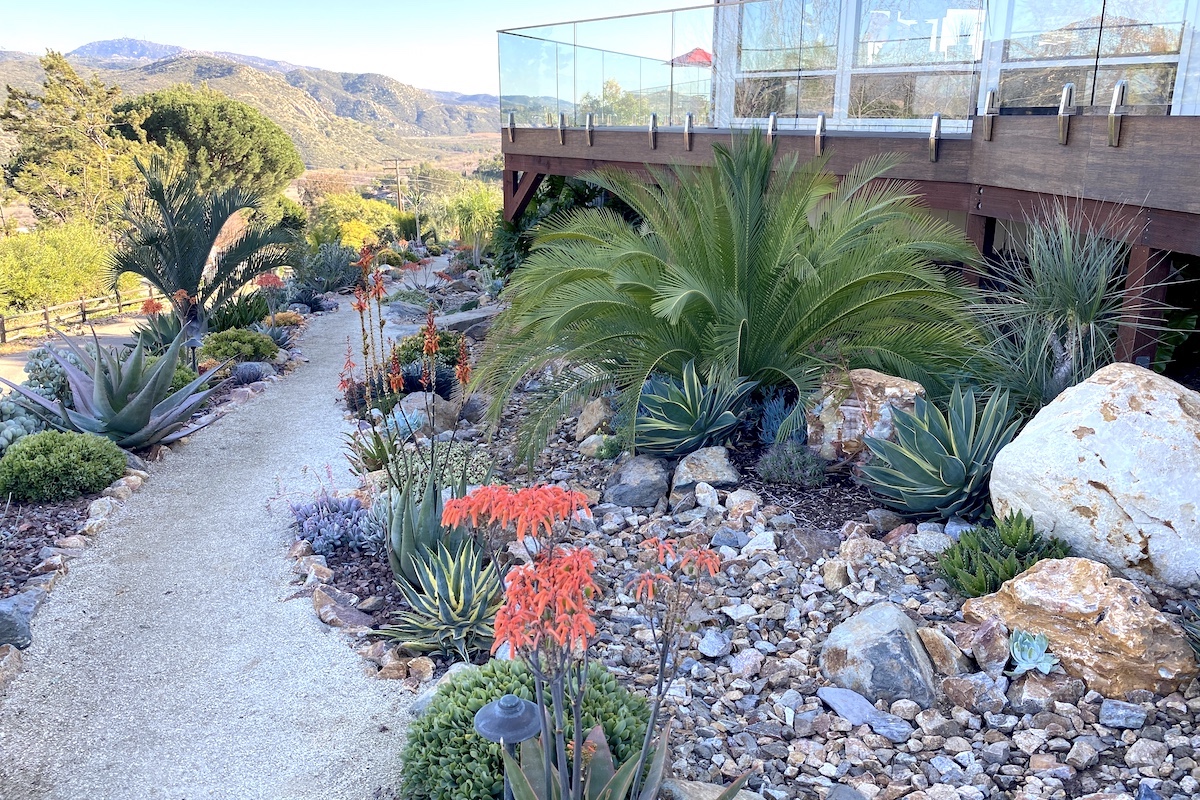
Dry stream bed (right) follows a slope's natural erosion channel
- Add a cobble-lined dry stream bed that channels rain in winter. It's a great filler for a long, narrow space---practical, and aesthetically pleasing, too.
Gallery of Succulent Driveways
Related info on this site
Why You Really Need Rocks
Smart designers cover bare soil with rocks in succulent gardens that are as sophisticated and good-looking as they are practical.
Why Your Garden Needs Golden Barrels
Find out why and how professional designers use golden barrel cactus in succulent gardens, tips on using and caring for the plants, info on their habitat, plus a garden idea gallery. But first a reassurance: For a cactus, it ain’t bad. Yes it’s spiny, but the spines curve downward, so it’s not as treacherous as it looks. IMHO, its plusses far outweigh any minuses.
Succulent Ice Plants, Gallery and Video
The brilliantly beautiful succulent ice plants you’ll see in my new page and video thrive in Zones 8-11. They come in eye-popping hues of purple, pink, lavender, rose-red, bright red, gold, orange and yellow.
The post Succulent Driveway Essentials appeared first on Debra Lee Baldwin. Copyright © Debra Lee Baldwin.
from Debra Lee Baldwin https://ift.tt/4WYrcEB
via IFTTT

